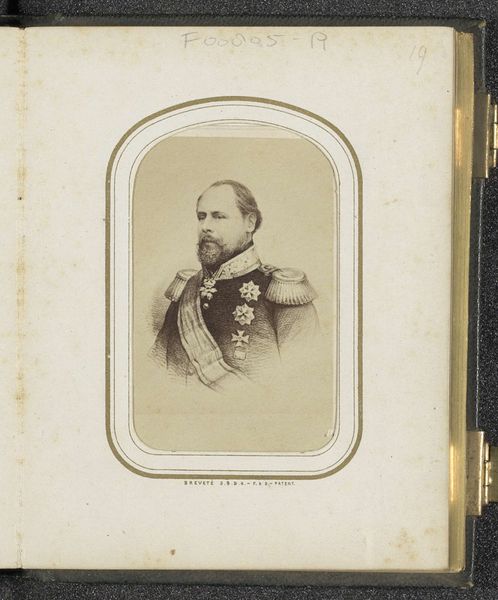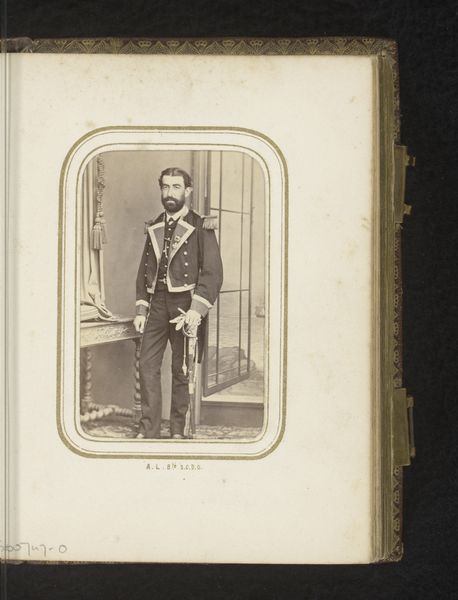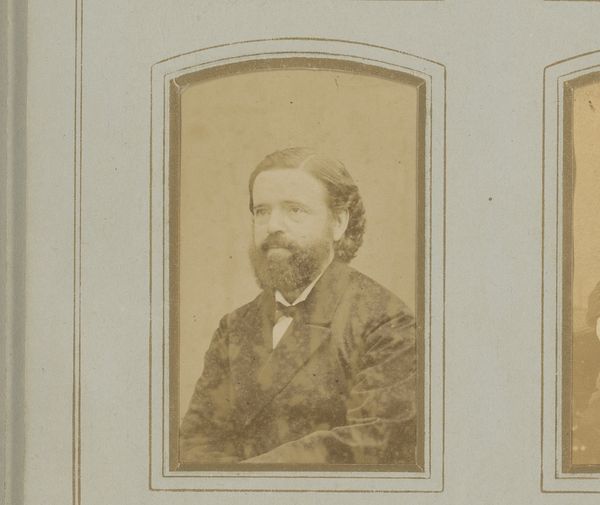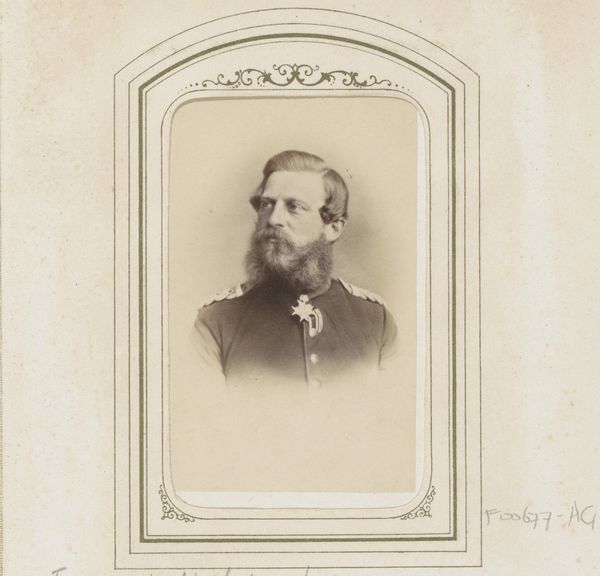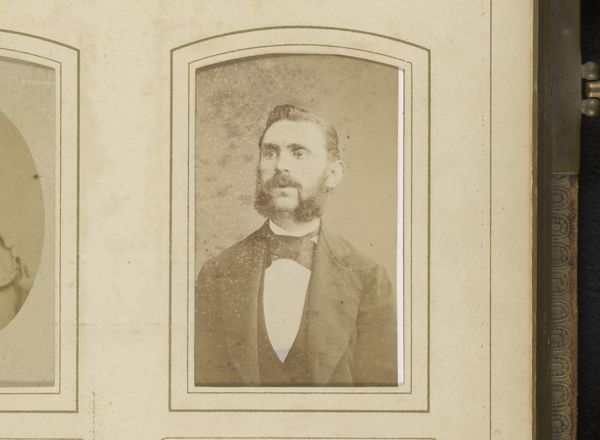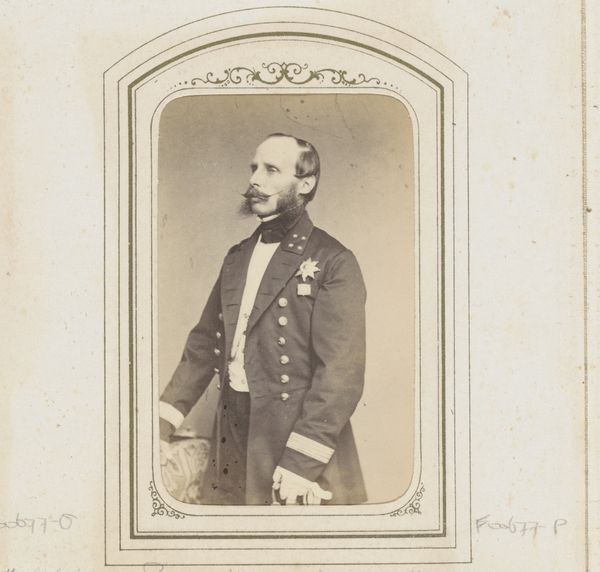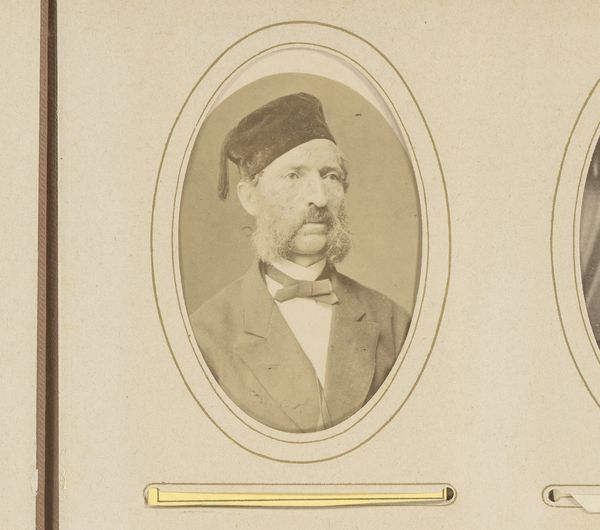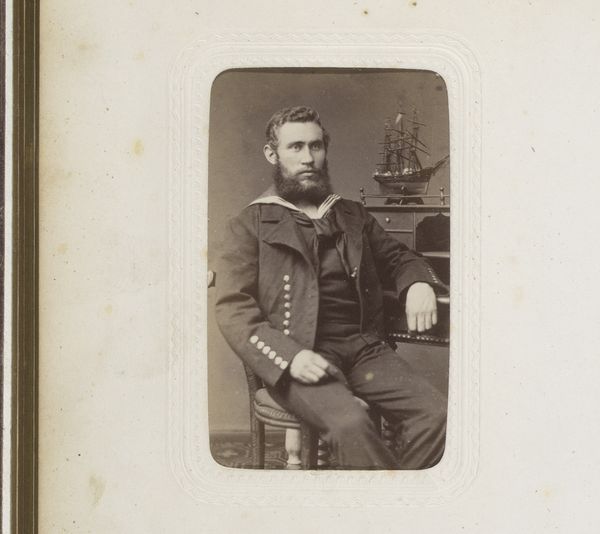
daguerreotype, photography
#
portrait
#
daguerreotype
#
photography
#
19th century
Dimensions: height 84 mm, width 51 mm
Copyright: Rijks Museum: Open Domain
Curator: Welcome to this examination of the striking portrait of Heinrich Barth, rendered sometime between 1860 and 1865. The work is a compelling example of nineteenth-century daguerreotype portraiture. Editor: My initial reaction is that there's something almost unsettlingly formal about it. The severe expression and dark attire certainly convey an air of authority, or perhaps even... solemnity? Curator: Indeed. The somber tonality contributes to a very composed effect, particularly accentuated by the tight framing around the sitter's torso. Notice also how the stark lighting enhances the details of Barth’s features and formal wear. Editor: Right. And it is precisely that formality that raises questions. Who was Heinrich Barth, and what does his portrayal signify in a broader socio-political context? I mean, those medals—what were their stories? He’s deliberately presenting an image of power and prestige. Curator: Barth was in fact a notable explorer and scholar, celebrated for his extensive travels in Africa. His work contributed greatly to the geographical and ethnographic understanding of the continent. This portrait therefore might be seen as a celebration of his intellectual achievements and public service. Editor: Precisely! The image then serves as a visual encoding of nineteenth-century European perceptions of exploration and colonial knowledge production. To me, his serious expression almost feels burdened by the implications of that era's imperial project. There's a story in that gaze, wouldn't you agree? Curator: I appreciate that insight. Certainly, the careful orchestration of light and shadow draws our attention to that intensity you describe. It adds complexity to an image which on the surface could seem straightforward. Editor: And the daguerreotype as a medium contributes to that perceived “truthfulness” while simultaneously mediating it, making us question how we view both the man and his era. Curator: A powerful confluence indeed—technology, portraiture, and the making of a public figure in an age defined by expansion. Editor: Ultimately, I think that this exploration of the intersection of image and historical narratives leaves us all more aware. Curator: Quite. It reminds us that close inspection is a rewarding route towards a better, and richer, awareness.
Comments
No comments
Be the first to comment and join the conversation on the ultimate creative platform.





